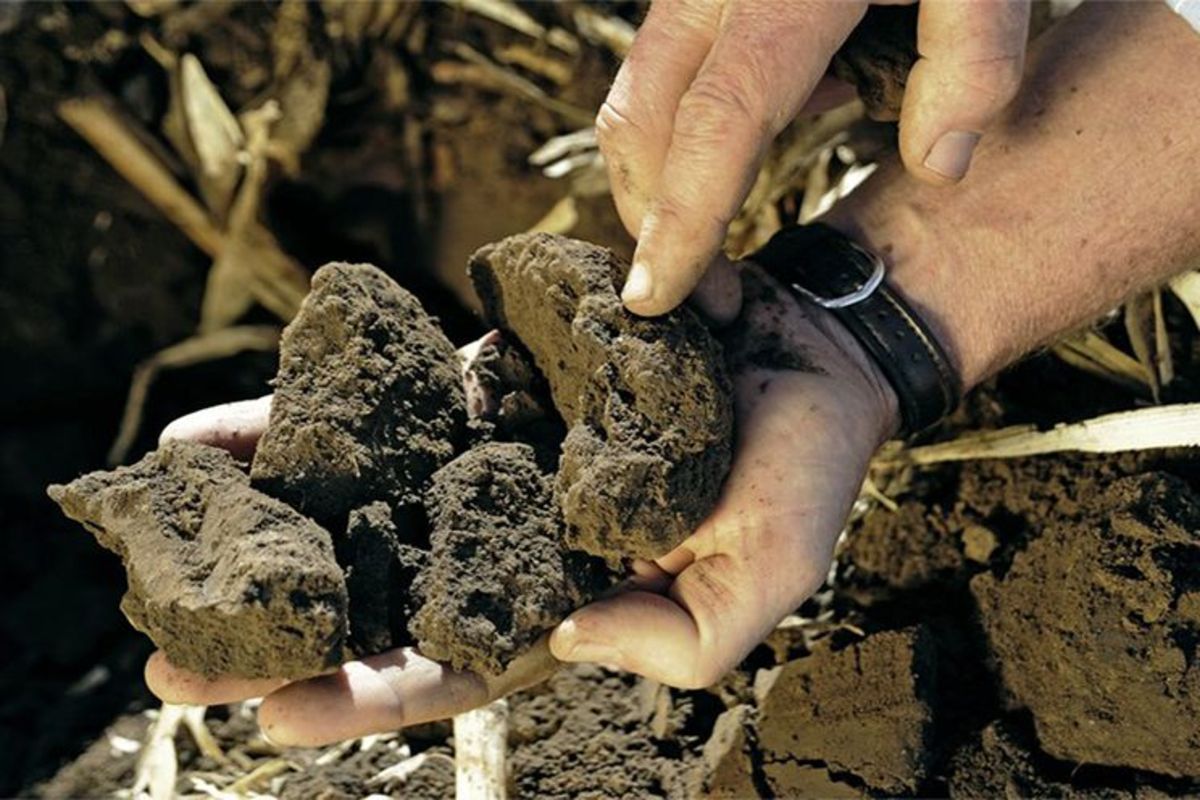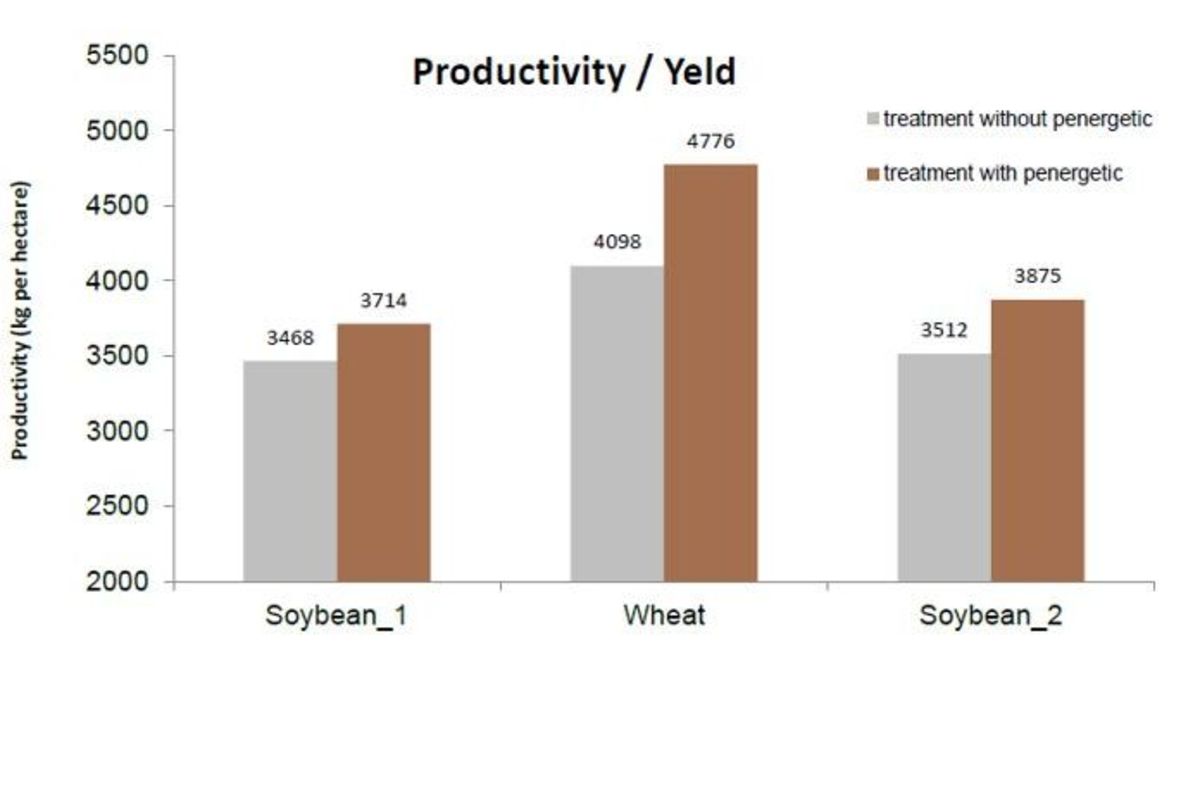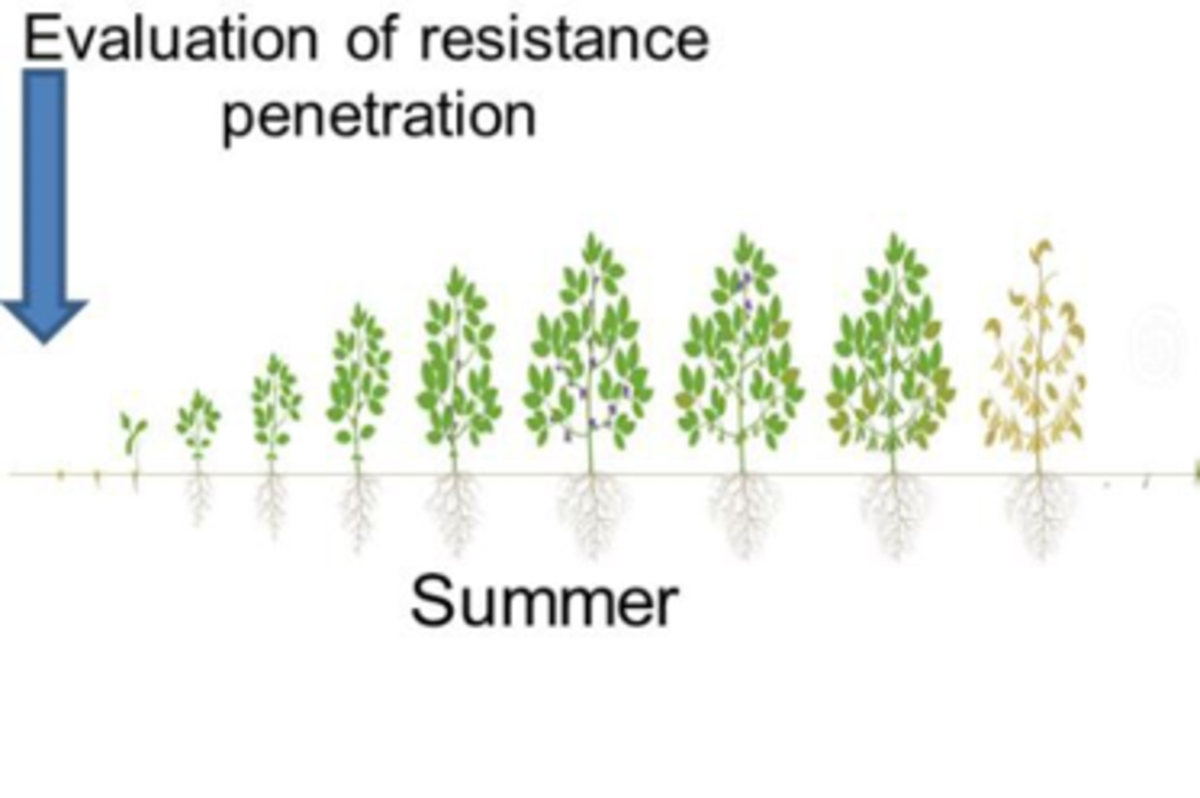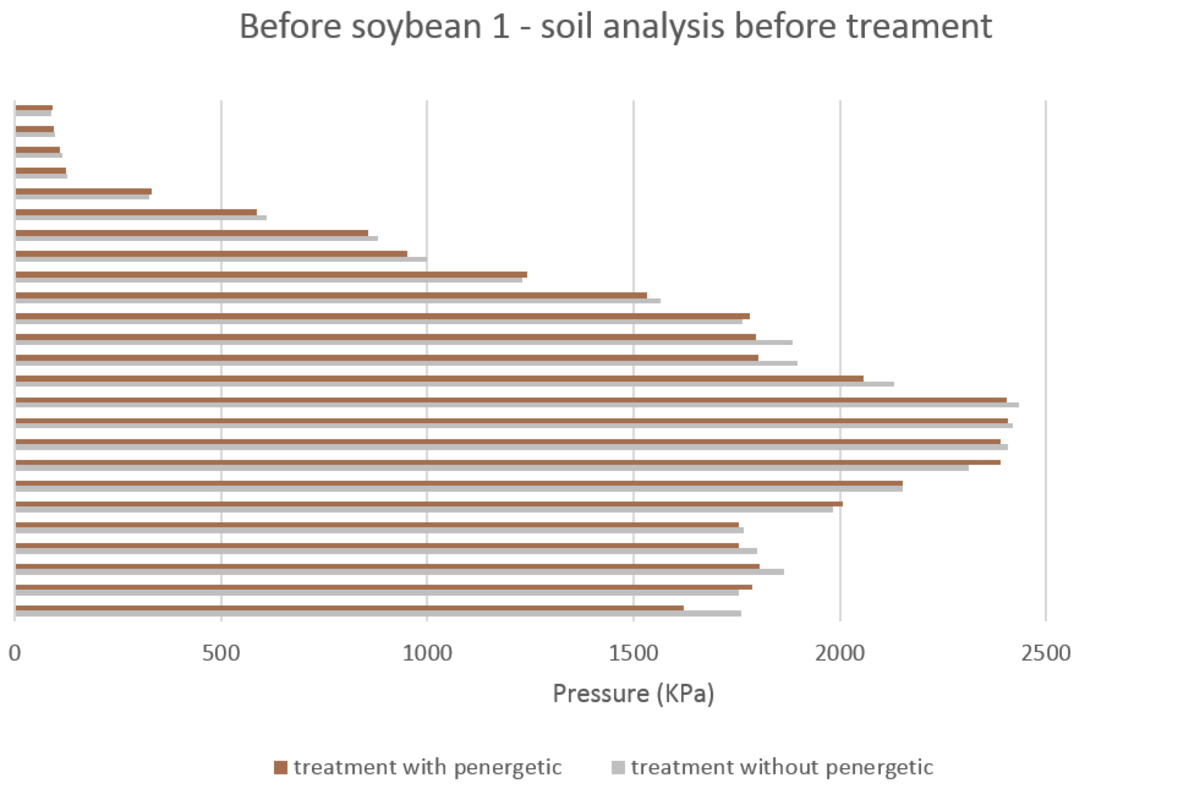Product(s)
penergetic b
Partner
Ricardo Bemfica Steffen and Gerusa Pauli Kist Steffen
PhD. Soil Science
Brazil
Customer
Ricardo Bemfica Steffen and Gerusa Pauli Kist Steffen
PhD. Soil Science
Brazil
Effects of Penergetic technology on reducing soil compaction and increasing crop productivity
One of the most pronounced effects of soil compaction is the reduction in the volume of soil explored roots, limiting the use of water and nutrients applied to the soil.
In the treatment with Penergetic, there was a significant reduction in resistance to penetration at depths of 11 to 22 cm. At depths of 14 to 20 centimeters, the greatest reductions in soil compaction occurred.

Compaction is considered to be one of the main causes of physical soil degradation caused by the reduction of soil volume when external pressure is applied.
Possible results are:
- increased soil resistance to penetration
- decreased porosity
- changes in the size distribution of pores.
Nutrients may be available, but the growth of the roots is limited, making it difficult to access them.
The experiments were carried out in soil classified as Oxisol with 54% clay. Areas were selected, where there was no history of use of technologies for biological stimulation and there was no use of cover crops as a routine management practice. In these areas, a succession of soybean - wheat - soybean crops, was utilized using a no-till system.
For the analysis of the Penetration resistance (PR), the Electronic Meter of soil compaction by pressure was used as analyzing method. For the determination of the water content in the soil undisturbed soil, samples were collected at random areas, for each treatment, simultaneously with the measurement of PR. The data from the penetrometer were tabulated in the computer program, provided by the manufacturer of the penetrometer, called "Soil Falker Compaction". Penetration resistance evaluations were carried out before soybean planting (start of evaluations) and after harvesting the second soybean crop (Figure 1)
The evaluations were carried out in cultivation bands with dimensions of 30 meters wide and 120 meters long. Two ranges were used, called "treatment without Penergetic" and "treatment with Penergetic". In these ranges, soybean and wheat crops were grown, in the succession called soybean 1 - wheat - soybean 2. Crop management was carried out according to regional technical recommendations. Fertilization and phytosanitary management were identical for the two cultivation ranges.
In the range called "with penergetic", dosages of 300 grams per hectare of Penergetic b were used 15 days before sowing and 300 grams per hectare of Penergetic p during the fourth leaf stage. Dosages and application times were the same for soybeans and wheat.
In the treatment with Penergetic, there was a significant reduction in resistance to penetration at depths of 11 to 22 cm. At depths of 14 to 20 centimeters, the greatest reductions in soil compaction occurred. Before the cultivation of soybean 1, the resistance to penetration at these depths was close to 2400 KPa. After the cultivation of soybean 2, the resistance to penetration at these depths was less than 1900 KPa.
It is important to note that the reduction of soil compaction in the subsurface layers was achieved in just 1.5 years of soil management using the system's biostimulation.

This effect was clearly seen in this work. The treatment with Penergetic in the soybean - wheat - soybean succession resulted in a decreased resistance to penetration (Figure 2) and increased productivity of the evaluated crops (Figure 3).
In the first year of assessment (first cycle of biostimulation), the soybean crop showed an increase of 7.09% in productivity, compared to the treatment where Penergetic was not used. In the second year of cultivation, the increase in productivity in the soybean crop was 10.33% (Figure 3). These results demonstrate that there is a continuous improvement in the production system, improving soil conditions and increasing benefits over time. The wheat crop in succession to soybean showed a productivity increase of 16.54% in relation to the treatment where Penergetic was not used.
More details in the study to download below.

